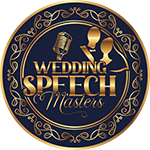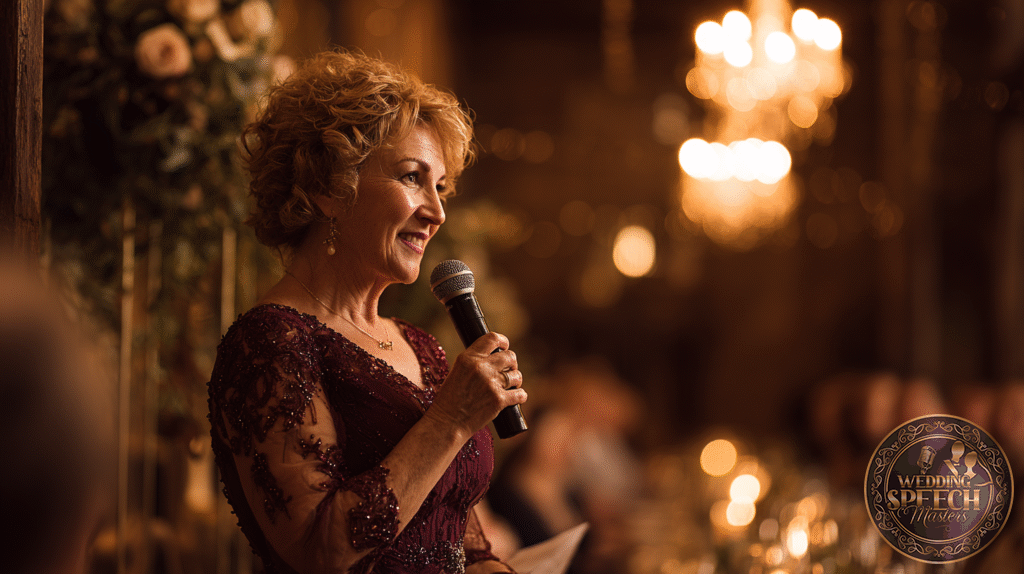
When it comes to delivering a wedding toast, effective communication is key. Being able to express your heartfelt sentiments succinctly can create a memorable speech that resonates with both the couple and the audience. In this article, we will explore tips for crafting wedding toasts that are impactful, concise, and meaningful. Whether you’re looking for heartfelt, funny, or emotional wedding toast ideas, we have you covered. Additionally, we will also provide toast etiquette tips and inspiration for creating a great wedding toast that will be remembered long after the celebration.
Key Takeaways:
- Expressing key sentiments succinctly creates memorable wedding toasts
- Consider the couple’s preferences and the audience when crafting your speech
- Include heartfelt, funny, or emotional elements to make the toast more engaging
- Follow toast etiquette tips to ensure a smooth and respectful delivery
- Focus on creating a short and sweet toast that leaves a lasting impression
The Importance of Concise Communication
In today’s fast-paced world, concise communication has become more important than ever. With the average human attention span decreasing and distractions causing delays in refocusing, it is crucial to prioritize effective and succinct communication. Good communication skills are even ranked as twice as important as good managerial skills in the workplace. In fact, workplace failures are often attributed to poor communication.
Furthermore, concise communication plays a vital role in executive presence and projecting confidence. Being able to express ideas clearly and succinctly can make a lasting impression and enhance one’s professional image. However, some individuals, particularly Sensitive Strivers, may face challenges in practicing concise communication. These challenges can include overexplaining, assuming others process information the same way, or trying to be someone they’re not.
In this section, we will delve into why concise communication is important and explore the common challenges individuals face in being concise. By understanding the significance of concise communication and identifying potential obstacles, we can work towards improving our communication skills and achieving greater effectiveness in personal and professional interactions.
Strategies for Communicating Clearly and Effectively
To communicate clearly and effectively, it’s important to employ various strategies. By implementing these strategies, you can ensure that your messages are concise and impactful.
Preparing in Advance
One of the key strategies for clear communication is preparing in advance. Before any important conversation or presentation, take the time to review agendas, create talking points, and organize your thoughts. This preparation will help you contribute effectively and ensure that your message is well-structured.
Providing a Pre-Read
When sharing written information, such as reports or documents, providing a pre-read can be immensely helpful. This gives recipients context and allows for briefer communication when discussing the content. By providing a pre-read, you can streamline the conversation and ensure that everyone is on the same page.
Using the PREP Framework
The PREP framework is a useful tool for impromptu speaking. It stands for making a point, giving a reason, providing evidence, and reiterating the point. By following this framework, you can effectively convey your message in a concise and logical manner.
Bridging and Flagging Statements
When communicating complex ideas or transitioning between different topics, bridging and flagging statements can help emphasize key points and aid in the smooth flow of the conversation. These statements serve as signposts, guiding your audience through the discussion and ensuring clarity.
Knowing Your Audience
Understanding your audience is essential for clear communication. By knowing their interests, background, and preferences, you can frame your messages in a way that resonates with them. This targeted approach ensures that your communication is relevant and engaging.
Asking Questions
Asking open-ended questions is an effective way to engage your audience and encourage their participation. This not only fosters clearer communication but also shows that you value their input. Additionally, practicing active listening when they respond helps ensure that your messages are concise and tailored to their needs.
Editing Emails and Eliminating Fluff
In written communication, such as emails, editing is crucial for concise and impactful messaging. Take the time to review and eliminate any unnecessary fluff or excessive details. By keeping your messages clear and to the point, you can ensure that the information is easily digestible and memorable for the recipient.
“Effective communication is about transmitting information in a way that is easy to understand and remember.”
By implementing these strategies for clear communication, you can enhance your effectiveness as a communicator and achieve better outcomes in both personal and professional settings.
Tailoring Your Message to the Audience
When it comes to effective communication, tailoring your message to the audience is essential. Understanding the needs, concerns, and preferences of your listeners allows you to frame your message in a way that resonates with them. Whether you’re speaking to different departments within your organization or addressing individuals from diverse backgrounds, adjusting your communication style is crucial for clarity and avoiding confusion.
One of the key elements in tailoring your message is avoiding jargon. While industry-specific terms may be familiar to you, they can be confusing for those outside of your field. Using language that is easily understood by everyone promotes concise communication and ensures that your message is received as intended.
To effectively tailor your message, audience analysis is essential. Consider their background, knowledge level, and specific needs. By understanding your audience, you can frame your message in a way that speaks to their interests and addresses their concerns. It’s important to remember that different departments may have varying priorities and perspectives, so adjust your communication style accordingly.
Techniques for Tailoring Your Message
- Conduct audience analysis: Research your audience to understand their backgrounds, knowledge level, and specific needs.
- Adapt your communication style: Adjust your communication style to align with the preferences and expectations of your audience.
- Avoid jargon: Use language that is easily understood by everyone and avoid using industry-specific terms.
- Speak to different departments or backgrounds: Tailor your message to speak directly to the concerns and priorities of different departments or individuals from diverse backgrounds.
- Use examples and analogies: Use relatable examples and analogies to explain complex concepts in a way that is easily understood.
- Engage in active listening: Listen attentively to your audience and be responsive to their questions and feedback.
By employing these techniques, you can ensure that your message is effectively delivered and understood by your audience, leading to more successful communication outcomes.
“The art of communication is the language of leadership.” – James Humes
| Benefits of Tailoring Your Message to the Audience | Examples |
|---|---|
| Improved understanding | By using language that is easily understood and addressing the specific needs of your audience, you enhance their understanding of your message. |
| Increase engagement | When your message is tailored to the interests and concerns of your audience, they are more likely to be actively engaged in the communication process. |
| Build rapport | Showing that you understand and respect your audience’s perspective helps establish trust and strengthens your relationship with them. |
Keeping It Short and Simple
When it comes to effective communication, brevity is key. By avoiding lengthy explanations and focusing on providing highlights and key points, you can ensure your message is clear, concise, and impactful. While it’s important to provide necessary details, overwhelming your audience with excessive information can lead to information overload and disengagement.
Instead of getting lost in the weeds, aim to deliver a message that cuts straight to the core. By highlighting the most important aspects and key takeaways, you can make sure your audience leaves with a clear understanding of your message.
To achieve brevity in communication, start by identifying the core message you want to convey. What are the key points that will have the most impact? Focus on those and avoid unnecessary tangents or excessive details.
“The most valuable of all talents is that of never using two words when one will do.” – Thomas Jefferson
Consider using lists or bullet points to present information in a concise and organized format. This not only makes it easier for your audience to follow along but also helps you stay on track and avoid going off on tangents.
Remember, concise communication doesn’t mean sacrificing clarity. Use simple and straightforward language that is easy for your audience to understand. Avoid jargon and industry-specific terms that may confuse or alienate your listeners.
Furthermore, incorporating visual aids can be an effective way to convey information concisely. Visuals such as charts, graphs, or images can help you communicate complex ideas in a simple and straightforward manner.
By keeping your communication short and simple, you not only save time but also ensure that your message resonates with your audience. Whether you’re delivering a presentation, writing an email, or having a conversation, strive for brevity, and focus on providing the highlights and key points that will leave a lasting impact.
Key Points:
- Avoid lengthy explanations and information overload.
- Highlight the most important aspects and key takeaways.
- Use lists or bullet points to present information concisely.
- Choose simple and straightforward language.
- Incorporate visual aids to communicate complex ideas.
Non-Verbal Communication and Visual Aids
Non-verbal cues, body language, gestures, and visual aids are powerful tools that greatly enhance communication. They play a crucial role in conveying messages succinctly and effectively, ensuring that your audience understands and engages with your message on a deeper level.
When communicating, being mindful of your body language, facial expressions, and tone of voice can significantly enhance the clarity and impact of your message. Non-verbal cues can convey emotions, intentions, and emphasis, allowing you to better connect with your audience and make your communication more memorable.
Moreover, incorporating gestures while speaking can help emphasize key points and add a dynamic element to your communication. Whether it’s hand gestures, nodding, or using your body to convey meaning, gestures can make your communication more engaging and persuasive.
“Gestures are the most powerful direct expressors of our intentions and emotions”
Additionally, visual aids such as images, graphs, or charts can be highly effective in conveying complex information concisely. Visuals provide a visual representation of data or concepts, allowing your audience to quickly grasp and retain information. They can help simplify complicated ideas, break down information into digestible parts, and make your communication more memorable.
By employing non-verbal cues, utilizing body language and gestures, and incorporating relevant visual aids, you can enhance the impact and clarity of your communication, making it more engaging, persuasive, and memorable.
Conclusion
Mastering the art of expressing key sentiments succinctly is a valuable skill for creating memorable speeches, as exemplified in wedding toasts. By following the tips and strategies outlined in this article, you can deliver heartfelt and impactful toasts that truly connect with your audience. Clear and concise communication is essential for building strong relationships and leaving a lasting impression.
Continuously practicing and honing your communication skills will enable you to become a more effective communicator in both personal and professional settings. Remember, concise communication does not simply mean using fewer words, but rather choosing the right words and employing non-verbal cues effectively.
By applying these skills, you will enhance your ability to connect with others and convey your thoughts and feelings more confidently. These succinct communication skills will not only have a positive impact on your personal relationships, but will also help you thrive in the workplace, where effective communication is highly valued. So, embrace the power of concise communication and unlock the full potential of your connections and interactions.
Source Links
- https://www.linkedin.com/pulse/20141124154010-7245993-7-tips-for-communicating-with-clarity
- https://www.forbes.com/sites/melodywilding/2020/07/27/how-to-be-a-confident-concise-communicator-even-when-you-have-to-speak-off-the-cuff/
- https://www.talespin.com/reading/how-to-communicate-succinctly

Ryan Conlon is the voice behind Wedding Speech Masters, a site dedicated to helping people express their hearts through memorable wedding speeches.
His passion for writing meaningful words began the day he stood up to deliver a speech at his brother’s wedding — a moment both nerve-wracking and unforgettable.
With shaky hands and a full heart, Ryan learned firsthand how powerful the right words can be.
That experience inspired him to create a space where others could find the guidance, confidence, and inspiration to speak with authenticity and grace on one of life’s biggest days.
Subscribe to Our Newsletter









